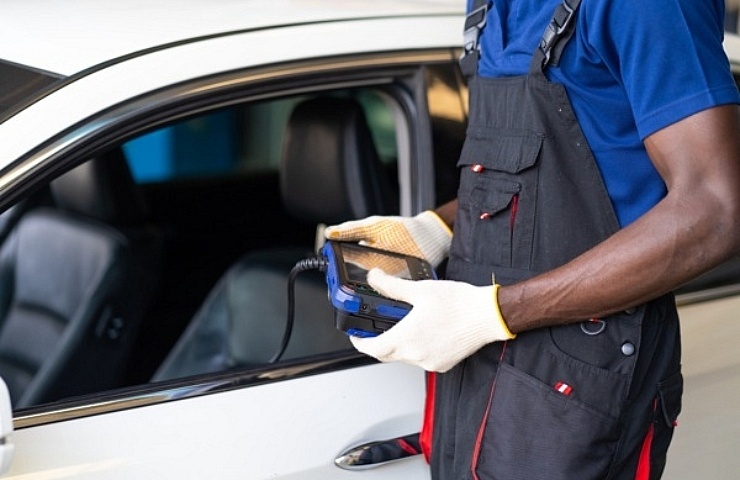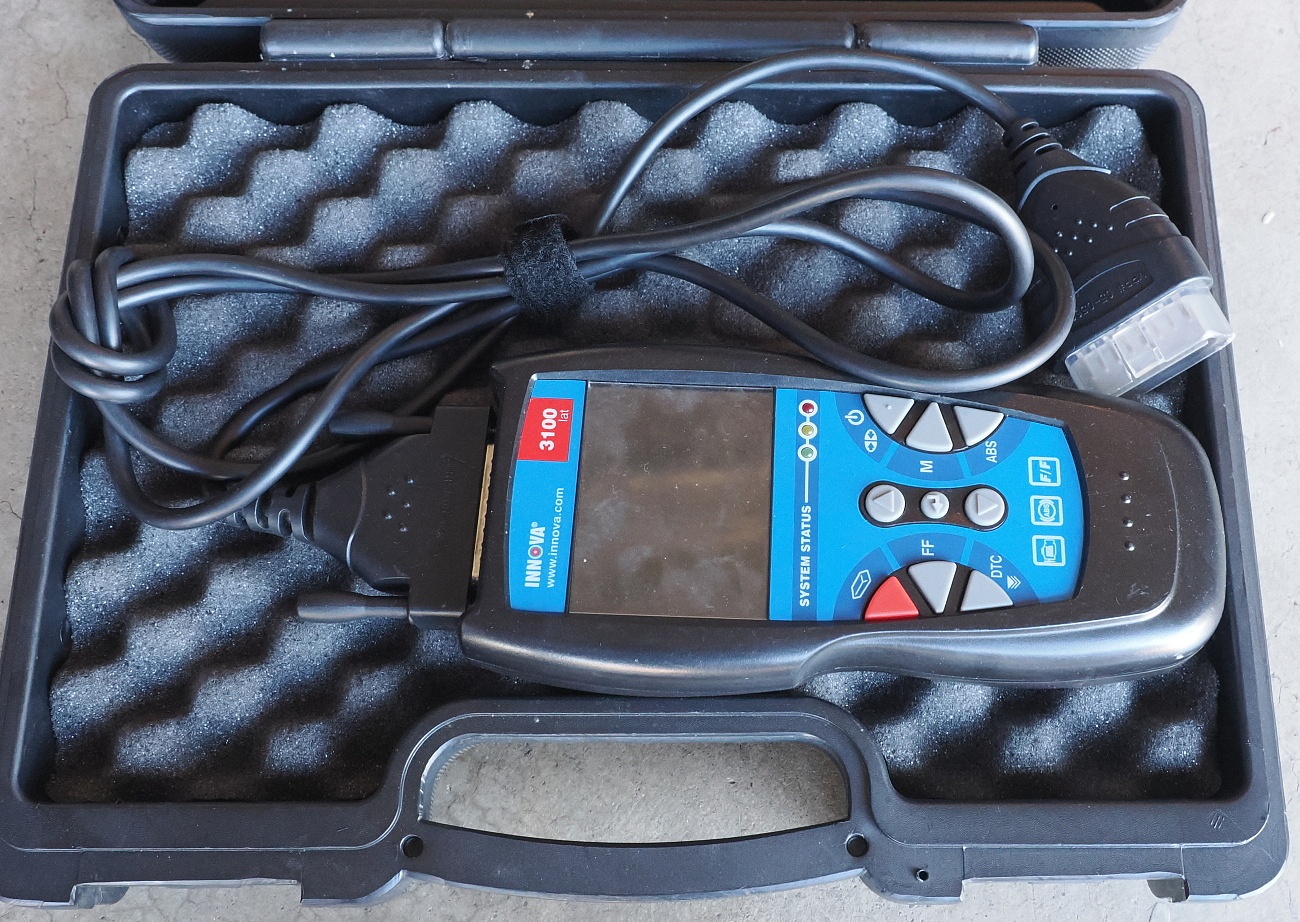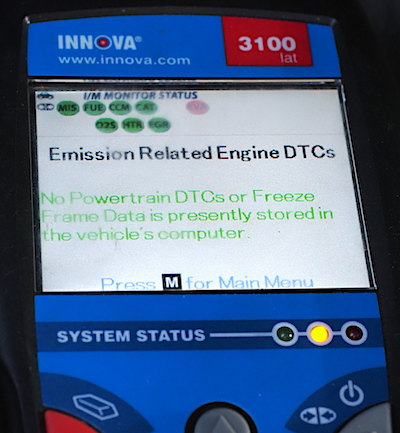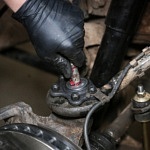Contents
Thanks to the modern electronics and computers installed in modern cars, there are a variety of sensors constantly checking all the car’s functions. The check engine light comes on when the system detects a severe issue beyond the expected range of settings. That is a sign that you should get an OBD reader and track down the cause of the check engine light.
OBDII Connectors
From 1994 on, the US Environmental Protection Agency (EPA) required light-duty vehicles to have an OBD connection. It’s usually under the driver’s side of the dashboard. An earlier version, OBDI, focused solely on emissions issues but was not standardized across vehicle manufacturers. The OBDII port accesses the vehicle’s monitoring system and has a standardized system for reporting error messages and diagnostic trouble codes (DTC).
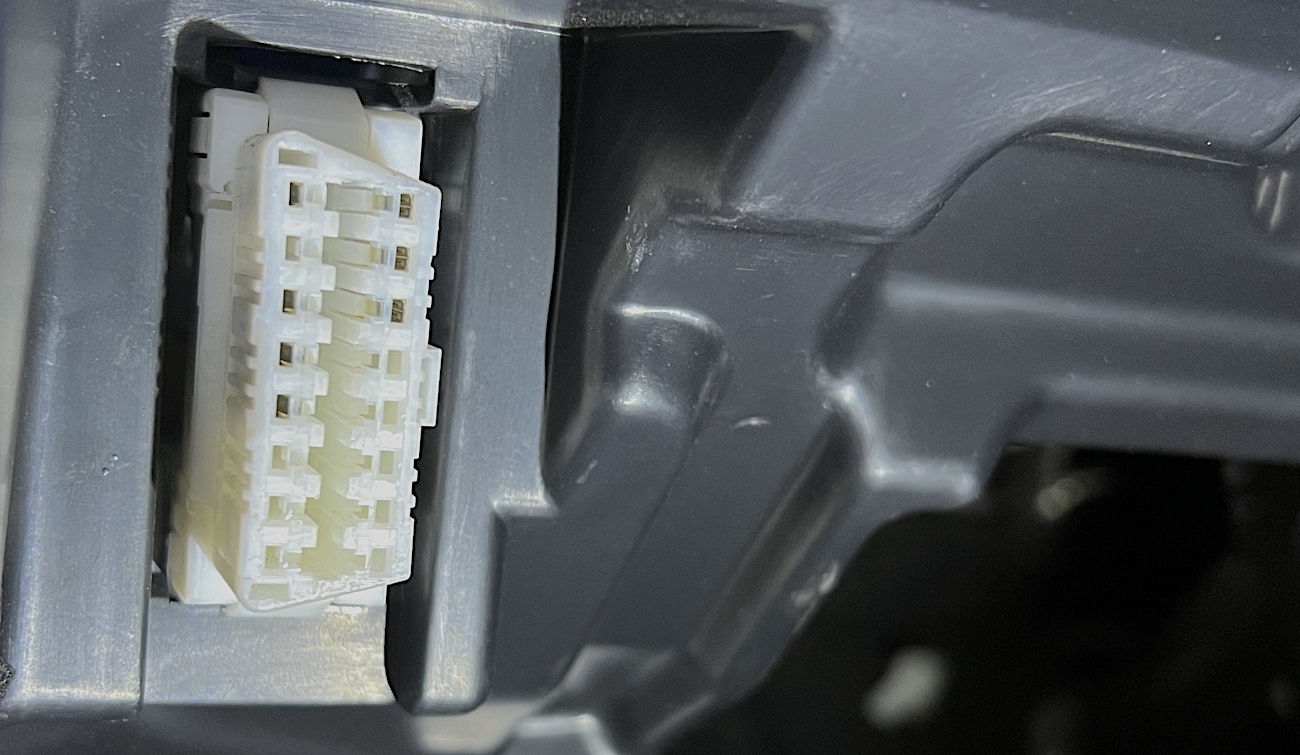
You’ll find the OBD port under the dashboard, in most cases.
The OBDII port also provides access to your vehicle’s internal systems. For details, read about cool digital car hacks using the OBD.
The Difference Between OBD Readers and Scanners
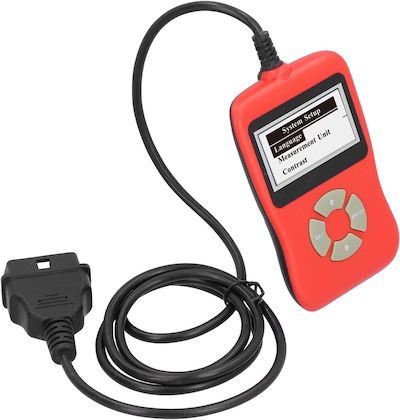
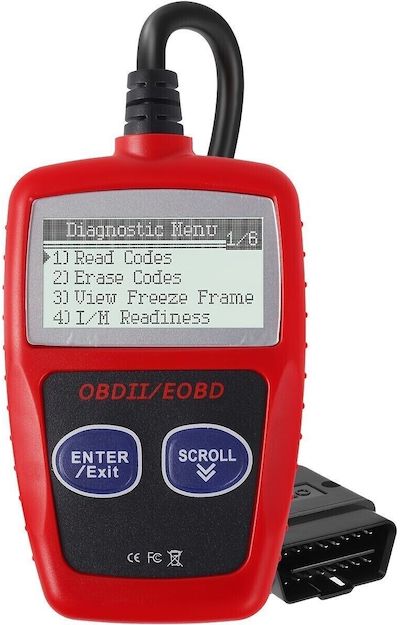
Using a scanner to remove a code and eliminate the check engine indicator may be tempting, but this “remedy” is probably temporary. The underlying issue causing the code hasn’t been addressed, so the code will likely resurface. The best solution is to resolve the problem causing the error—not just clear the code.
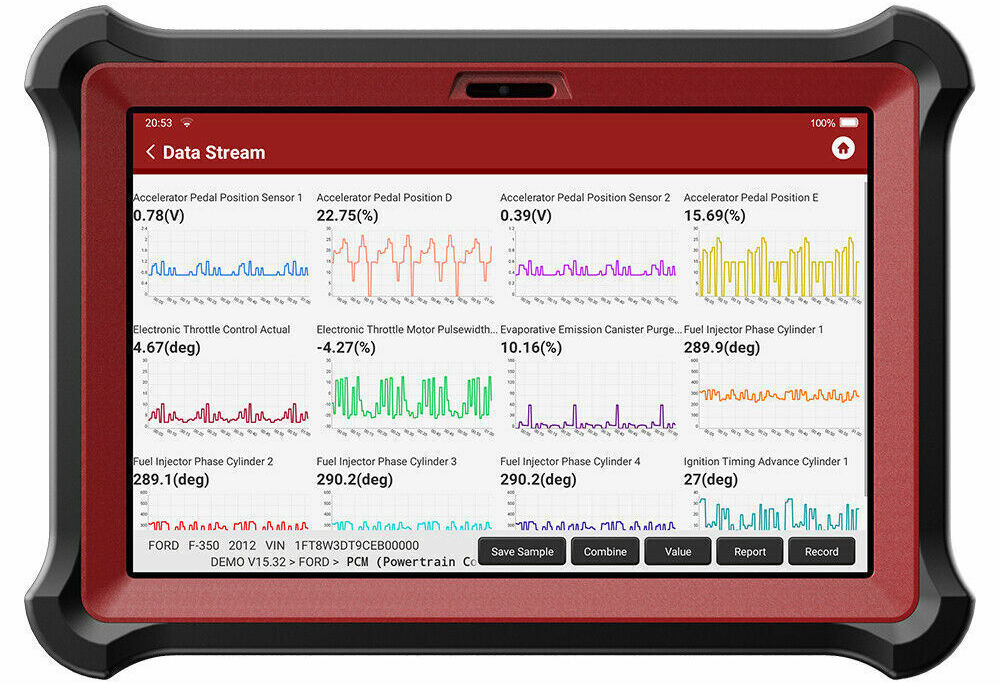
A high-tech OBD scanner offers more display options.
Expect to pay more for a scanner, which is an advanced troubleshooting device. Most scanners work with different makes and models, giving them more flexibility than a reader.
Shop now for OBD scanners & readers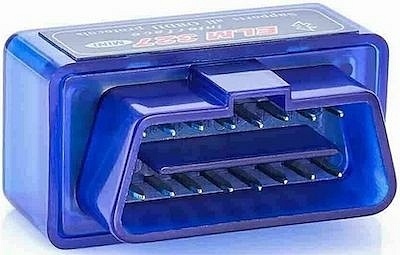
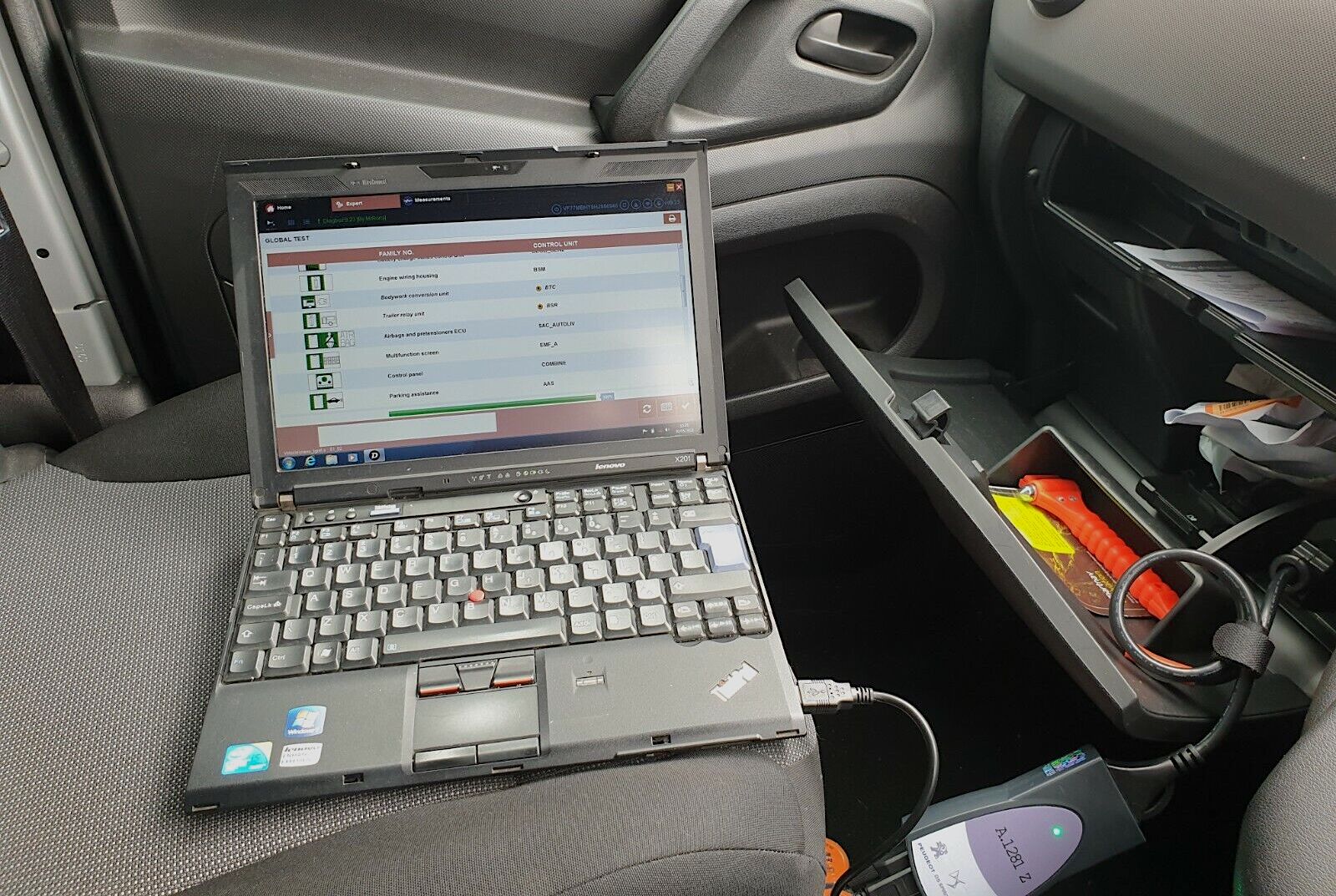
OBD software on a laptop can offer the most tools but is pricey.
Technicians often use a scanner designed to connect to a laptop or tablet. These high-end scanners offer more versatility, record more readings, show graphic reports, provide real-time readings from the sensors, and offer more diagnostic tools. For most DIY users, an OBDII laptop-based tool is overkill. They can cost more than $3,500—not including the cost of a laptop.
Shop now for Bluetooth OBD devicesHow to Use an OBD Reader or Scanner
With an OBD reader or scanner, you can access and read the DTCs. Check your user manual for detailed operating instructions.
Plug your cable into the OBDII port. Note that the trapezoid-shaped port only allows the plug to connect if oriented in the correct position.
- Turn the ignition switch to the on position, but do not start the engine.
- Wait at least five seconds for the OBD tool to establish a link. It might take over a minute to acquire all the codes in the system.
- Have a paper and pen handy and write down the codes as displayed. Don’t worry if the codes are displayed too fast. Most tools let you repeat the readings.
- Use the scanner’s advanced capabilities, if it has them, to determine the code’s meaning, or consult a reference guide to interpret what the code means.
- Just because a code was recorded does not mean the related part is malfunctioning and needs immediate replacement. These codes suggest what might be wrong with a vehicle. Often, more than one cause could be responsible for the error code.
For example, the catalytic converter’s oxygen sensor might signal a circuit malfunction (P0150). Possible causes include a damaged sensor, a disconnected sensor, a short in the wiring, or a faulty sensor.
Interpreting the OBD Codes
Manufacturers have standardized the codes into four main categories, so knowing the code can give you the error’s basic information. Each code is five digits long, with the first character—the letters P, B, C, or U—indicating the major component.
P: Powertrain, including the engine, transmission, and related accessories.
B: Body and car interior, including airbags, seat belts, power windows, power seats, and other electrical components
C: Chassis and suspension issues, including brakes, traction control, and antilock braking systems
U: Network and integration issues related to electrical components not connecting as expected. Vehicles rely on integration between various components, so codes erupt when the data transfer breaks down.
The second through fifth digits are numbers or letters indicating the specific component triggering the code. Generally, codes numbering from 1,000 to 3,000 are manufacturer-specific. That is when a more sophisticated OBD scanner is helpful. It can interpret those codes without needing to look it up.
Shop now for WiFi OBD devicesThere is usually an indication if a code is active or pending.
- An active code has illuminated the check engine light and is cause for concern.
- A pending code indicates a reading is outside the norm, but the frequency and extent of the reading haven’t caused the check engine light to come on. For example, some diagnostics require a code to be generated five times within 10 starting cycles to generate a check engine light. If the codes don’t occur often enough, they disappear and don’t become active.
Common OBD Error Codes
The most common error codes are for powertrain and networking issues. Here are some examples and potential causes:
P0302 – Cylinder 2 misfire detected. The last digit indicates which cylinder misfired. This could be a bad spark plug wire or a related cause.
P0441 – EVAP system incorrect purge flow. This is likely a faulty purge valve or a disconnected or plugged line.
P0171 – System too lean bank 1. This indicates that the air-to-fuel mixture is too lean. It generally occurs when your powertrain control module (PCM) can’t compensate for driving conditions by adding sufficient fuel to the air-to-fuel mixture.
P0128 – Coolant temperature below thermostat. This common code indicates the car’s coolant is so cool the thermostat cannot regulate it. This could be caused by a bad coolant sensor, the fan being left constantly on, or a faulty thermostat.
P0522 – Engine oil pressure sensor/switch A low. This indicates a faulty sensor, low oil pressure, or a bad connection in the circuit.
P0101 – Mass airflow sensor out of range. This device measures the amount of air entering the engine. If the airflow reading is too low, it will trigger a code. It may indicate a blockage in the intake system or a faulty MAF sensor.
P0521 – Engine oil pressure sensor/switch A – range/performance. This code is generally triggered if the oil pressure readings from the sensor are too high or low. It also could be caused if the oil pressure doesn’t vary significantly. Potentially, the oil pressure sensor is faulty.
P0320 – Ignition/distributor engine speed input circuit. This is caused by the car’s engine control module (ECM) not sensing where the crankshaft or camshaft is positioned. Without this information, the car can’t determine when to ignite the spark plugs. This is a severe problem and might even prevent the car from starting.
P0012 – Camshaft position-timing over-retarded bank 1. This indicates a difference between the camshaft recorded position angle and the actual position angle. It could be caused by a bad timing solenoid, low oil, or maladjusted engine timing.
P0138 – O2 sensor circuit high voltage bank 1, sensor 2. This occurs when the oxygen sensor detects a high voltage reading for over 10 seconds. A bad sensor, poor wiring, or an exhaust leak at the sensor could cause this. This code is a great example of how detailed the codes can be. Bank 1 indicates which side of the engine (for the odd-numbered cylinders) the sensor is on, and sensor 2 indicates the O2 sensor after the catalytic converter. Of the four typical O2 sensors, you now know the specific sensor to examine.
P06DD – Engine oil pressure control circuit stuck off. This code is triggered when the oil pressure is too low at the oil pump. That could be caused by insufficient oil, dirty oil, a bad sensor or harness, or a faulty oil pump. Again, this serves as a reminder that while a code indicates which sensor is generating the error code, the cause might be from one of many components. You wouldn’t want to replace the oil pump when the solution may be as simple as adding two quarts of oil.
Shop now for OBD scanners & readersWhile initially designed to keep cars from polluting, the OBDII system offers vast diagnostic information to help determine what is ailing your car. An OBDII tool is a great asset for accessing all the sensors and data that today’s vehicles provide. In the 21st century, it has become an essential tool in a mechanic’s toolbox.
See Automotive Code Readers & Scanners for sale on eBay.

